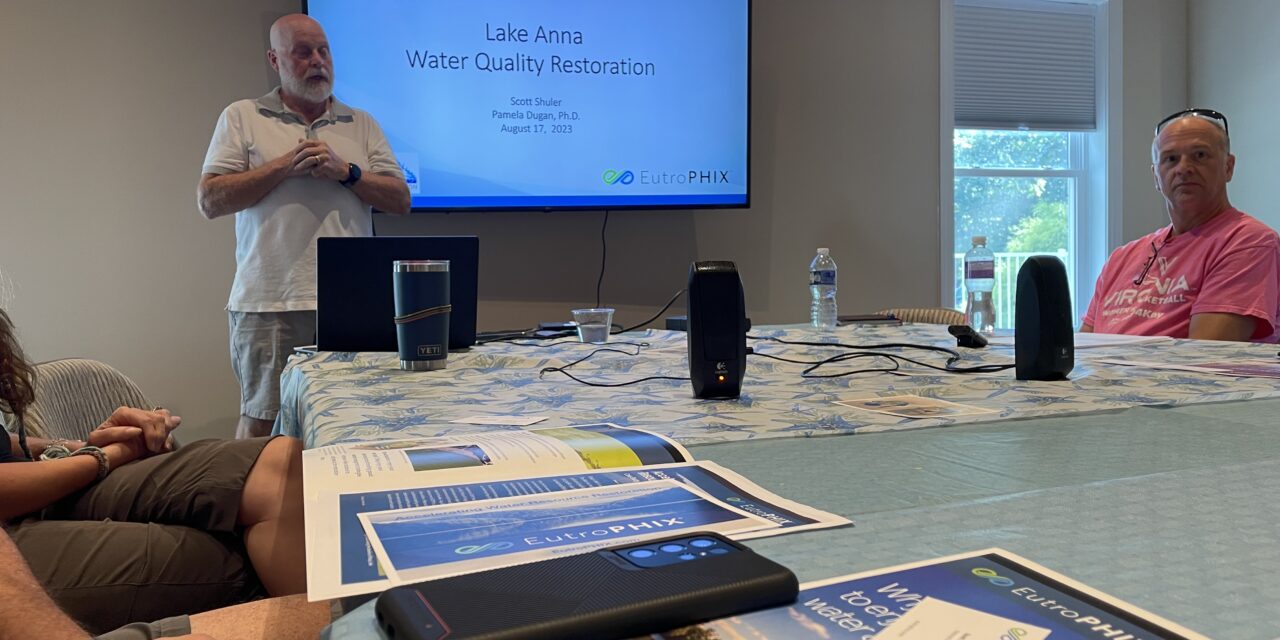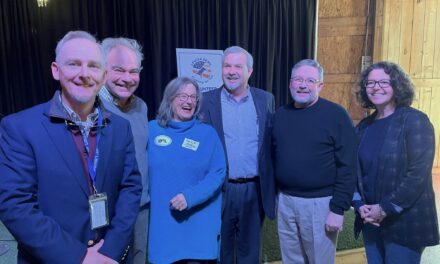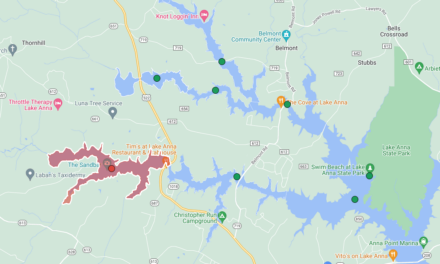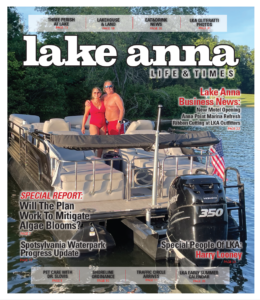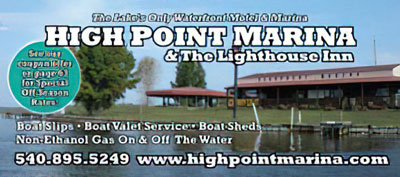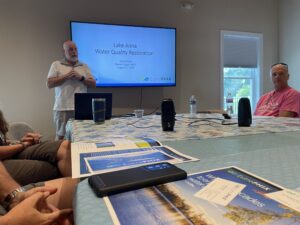
Members of the Lake Anna Civic Association (LACA) met August 17 at Mt. Pleasant Church to listen as Eutrophix presented a plan to mitigate excessive phosphorus in Lake Anna that is causing summertime algae blooms and Harmful Algae Bloom (HAB) advisories,
LACA president Greg Baker presided over the meeting with Water Quality Committee Chairman Harry Looney introducing Scott Shuler and Dr. Pam Dugan Eutrophix. Shuler told the group the Indiana-based company had proven methods to remove phosphorus from lakes and told the group how he could do it for Lake Anna using a specialized material that binds to the common element.
The company would add EutroSorb G to the upper portions of the North Anna, Pamunkey Branch and Terry’s Run sections of the river. The product would bind to suspended phosphorus and remove it from the water, thus not allowing it to feed algal growth.
Shuler said Lake Anna has a 340-sq. mi. watershed or 17 sq. mil. per acre of lake. He also noted it takes just one pound of phosphorus to grow 500 pounds of algae.
Lake Anna is officially considered an “impaired water” by the state based on the three years of continuous HAB advisories.
“The upper end of the lake is considered eutrophic or hypereutrophic based on phosporus levels,” Shuler noted. “There are readings of 24-96 ug/L of phosphorus during most sampling, Some samples are over 96 ug/L. The EPA says anything over 30 is bad.”
Shuler explained the phosphorus comes from two sources: 1) high loads in botton sediments and 2) inflow in the upper end of the lake.
Critical areas in need of restoration include 378.7 acres in Terry’s Run, 470.5 acres in the Pamunkey Branch and 599.8 acres in the upper North Anna for a total of 1,450 acres. Shuler said these areas held approximately 45,856 pounds of phosphorus in the sediment to manage that can feed 22 million pounds of algae.
He also told attendees, “If you do nothing now, it will be 10-30 years before you can make it better.”
The projected cost for Eutrophix to mitigate excessive phoshorus at Lake Anna would be $3,222,800 in year one and $8,922,401 in years two and three. Shuler said most of the projects he’s worked on like Anna’s required federally mandated funding.
Baker told Life & Times:” It is hard to hear that not a single lake with HAB in the US has been cleaned through watershed restoration. Don’t get me wrong, we need to continue to focus on best practices and work with our partners upstream to make Lake Anna a cleaner and safer lake. We are not going to solve our HABs at Lake Anna unless we resolve the problem with excess phosphorus. Whether working with EutroPHIX is the final solution or not, it is abundantly clear that to solve HAB at Lake Anna will require financial support from the community, the counties, state and the federal government. Now is the time to talk to our representatives about action.”

